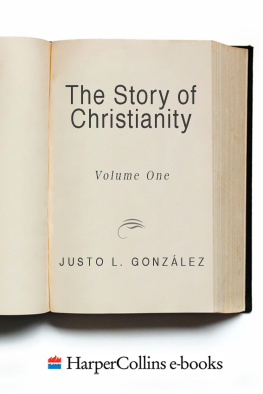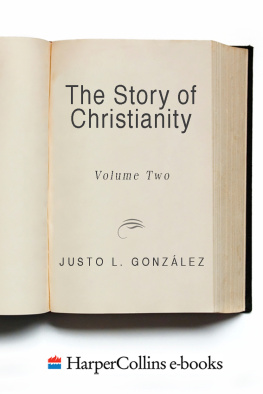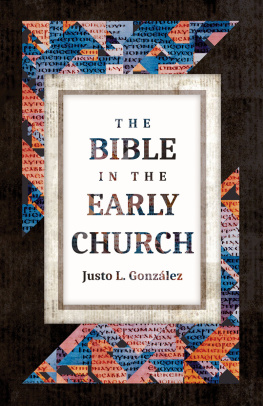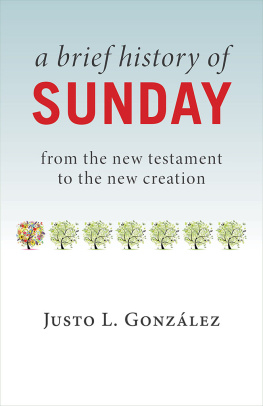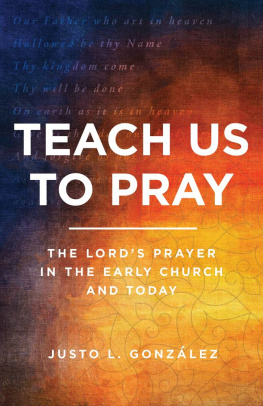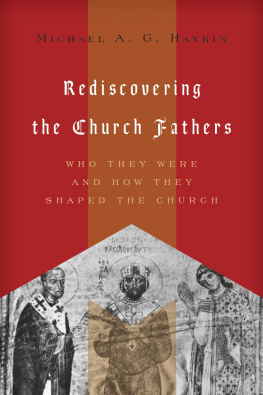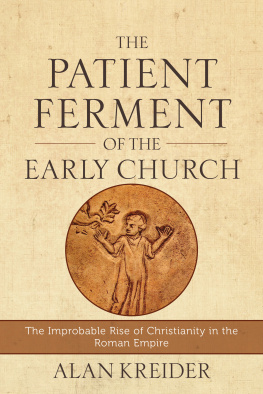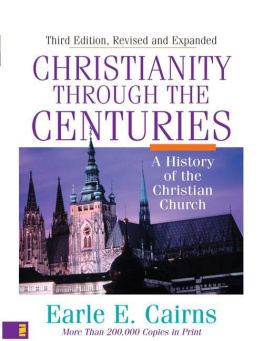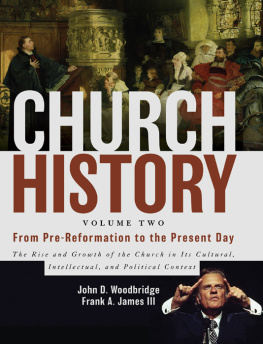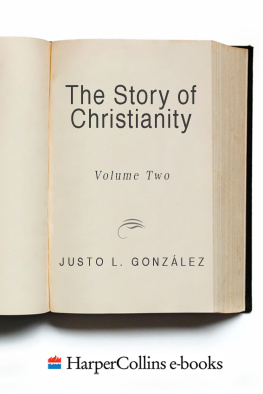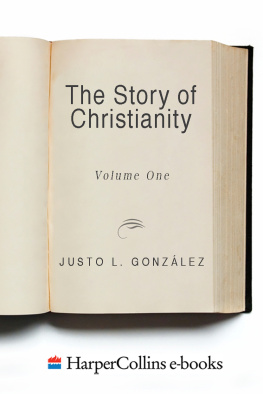To Catherine
Contents
Maps
T he reader will probably be surprised to learn that I regard this book in large measure as autobiographical. It is so first of all because, as Jos Ortega y Gasset said, each generation stands on the shoulders of its predecessors like acrobats in a vast human pyramid. Thus, to tell the story of those to whom we are heirs is to write a long preface to our own life stories.
But this book is also autobiographical in a second sense, for it deals with friends and companions with whom I have spent the last three decades. Since I first met Irenaeus, Athanasius, and the rest, and as I have read their writings and pondered their thoughts and deeds, they have accompanied me through the many turns and twists of life. Like contemporary friends, they have often been a joy, at other times a puzzlement, and even sometimes an aggravation. But still, they have become part of me, and as I write of them I am also aware that I am writing of my life with them.
It is customary in a preface to acknowledge those who have contributed to the writing of the book. This I find impossible, for I would have to name a long list of scholars, both living and deadOrigen, Eusebius, the Inca Garcilaso de la Vega, Harnack, and the host of unknown monks who copied and recopied manuscripts.
Among my contemporaries, however, there are two who I must mention. The first is my wife, Catherine Gunsalus Gonzlez, Professor of Church History at Columbia Theological Seminary, in Decatur, Georgia, who has shared with me the last decade of my journey with the ancients, and whose reading and criticism of my manuscript have proven invaluable. The naming of the second is a sign of our times, for this is my live-in, full-time secretary of six years: the word processor on which I have prepared this manuscript. Many of the adjectives usually applied to typists in prefaces also apply to my word processor: patient, careful, uncomplaining, always ready to serve. Indeed, this secretary has typed and retyped my manuscript with no more protest than an occasional beep. However, as I write these very last words of my manuscript, an electric storm has forced me to take pen in hand once again, thus reminding me that we are not as far removed as we sometimes think from the time of Origen and Eusebius!
As I send this book out into the world, it is my hope that others will enjoy the reading of it as much as I have enjoyed the writing of it.
I t may seem odd that history needs to be revisited, revised, and rewritten; and yet it does. This is so, because history is never simply the bare past as it actually happened; it is the past as read through the sources that have survived, as selected by countless generations of historians, and as interpreted from our own present and from the future for which we hope. Thus, when I now read The Story of Christianity almost a quarter of a century after it was first written, I find much to reaffirm, but also much to revise. A few years after the first publication of this book, the Soviet Union collapsed. Then there was a resurgence of Islam, of which the rest of the world became aware as extreme and fanatical Muslims plotted and perpetrated acts of terrorism in every continent. Within Christianity itself, Pentecostalism and several similar movements took center stage through their growth both in traditionally Christian lands and in other regions. In many of those areas, new religions arose, many of them inspired by Christianity and taking some elements from it. The prospect of unprecedented ecological disaster finally gained the attention of governments and their leaders. The sustainability of the world economic order was severely questioned, no longer just by radical ideologues, but also by respected economists. The technology of communications has exploded. These developmentsand many morehave shaped the way we look both at the future and at the past. Hence the need for a revised edition of this book.
The other compelling reason for such a revised edition is my desire to incorporate in The Story of Christianity a number of comments and suggestions that I have received during the intervening years. Some have come from colleagues who read and used this book in English. Others have come as a result of a number of translations making the book itself available to widely different culturesfor the very process of translation brings to light ambiguities that are not immediately noticeable in the original language. Students and colleagues reading The Story from widely divergent culturesfor instance, in Japan, in Brazil, in Russia, in Koreahave widened my scope of what this book should include. I have not incorporated all their suggestions into the present edition (it is impossible to satisfy both those who want more on a given subject and those who want less!). But to all of them I am deeply grateful, particularly to students who have told me that a particular subject was not clear, or that they found another illuminating. Among those colleagues whose suggestions have proven valuable, I must again single out my wife, Catherine, who has read and reread my manuscript with unparalleled patience and wise advice. I must also express a particular word of gratitude to Professor James D. Smith III, of Bethel Seminary San Diego, whose many detailed suggestions have greatly improved the book.
As I send this new edition out into the world, I am acutely aware that it too will need to be revised; that history will have to be written anew again and again as generations succeed one another. It is thus my hope that this revised edition will inspire others to further revision as they enter into the fascinating dialogue between the present and the past that is the very essence of history: a dialogue in which the past addresses us, but does so in terms of our present questions.
1
Introduction
In those days a decree went out from Caesar Augustus that all the world should be enrolled.
LUKE 2:1
F rom its very beginning, the Christian message was grafted onto human history. The Good News Christians have proclaimed through the ages is that in Jesus Christ, and for our salvation, God has entered human history in a unique way. History is crucial for understanding not only the life of Jesus, but also the entire biblical message. A good deal of the Old Testament is historical narrative. The Bible tells the story of Gods revelation in the life and history of the people of God. Without that story, it is impossible to know that revelation.
The New Testament writers are quite clear about this. The Gospel of Luke tells us that the birth of Jesus took place during the reign of Augustus Caesar, when Quirinius was governor of Syria (2:2). Shortly before, the same Gospel places the narrative within the context of Palestinian history, recording that it took place in the days of Herod, king of Judaea (1:5). The Gospel of Matthew opens with a genealogy that places Jesus within the framework of the history and hopes of Israel, and then goes on to date the birth of Jesus in the days of Herod the king (2:1). Mark gives less chronological detail, but still does affirm that Jesus began his ministry in those daysthat is, the days of John the Baptist (1:9). The fourth gospel wishes to make clear that the significance of these events is not transitory, and therefore begins by stating that the Word who was made flesh in human history (1:14) is the same Word who was in the beginning with God (1:2). Finally, a similar note is sounded in the First Epistle of John, the opening lines of which declare that that which was from the beginning is also that which we have heard, which we have seen with our eyes, which we have looked upon and touched with our hands (1:1).

